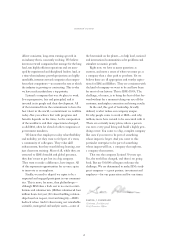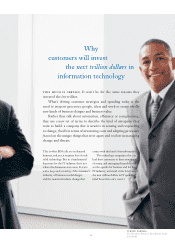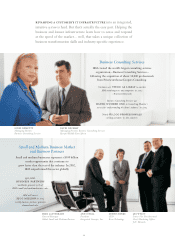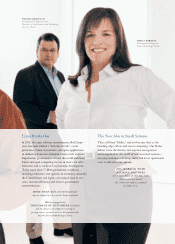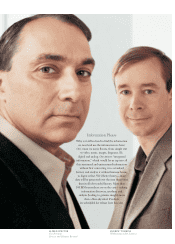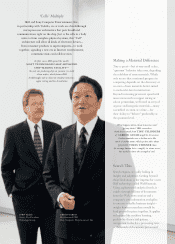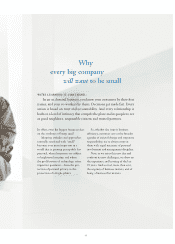IBM 2002 Annual Report Download - page 30
Download and view the complete annual report
Please find page 30 of the 2002 IBM annual report below. You can navigate through the pages in the report by either clicking on the pages listed below, or by using the keyword search tool below to find specific information within the annual report.
28
calisto zuzarte
Senior Technical Manager
DB2 Development
jeffrey gore
Vice President
e-business On Demand
Utility Services
In Storage, the Word Is ‘Software’
The value proposition in storage is no longer just
hardware. The next big storage battle is the software that
allows customers to plug into, and manage, all of their
information as though it were in one place. “Virtualizing”
the data will supercharge applications that rely on real-
time information in everything from customer service to
fraud detection. Later this year, new IBM storage
software offerings will move intelligence that’s locked
inside individual servers out across the storage network,
where it can be available to all application servers.
Based on data through
the first three quarters of 2002, IDC forecast IBM’s external
storage share to grow 5.8%
between 2000 and 2002, while the market leader’s share
was predicted to decline
A More Self-Reliant Model
Computers can no longer depend on human babysitters.
To operate at on demand speeds, the systems themselves
must take over functions that today require human
management. That’s not a statement of what’s to come.
IBM delivered broad-based autonomic capabilities in 2002.
Te c hnology in IBM eServer zSeries
automatically detects intrusions,
and deflects “denial of service” attacks that
flood a system or website with incoming messages
Storage Manager from Tivoli has
self-configuring, self-healing,
self-optimizing and self-protecting
functions—from automated
data protection to disaster recovery
high-end server technologies “learn”
about Internet traffic patterns or the ebb and flow of
application use, and improve performance—in real time—
across a diverse set of systems


